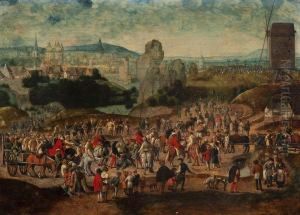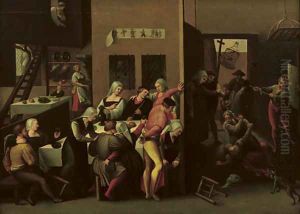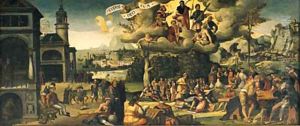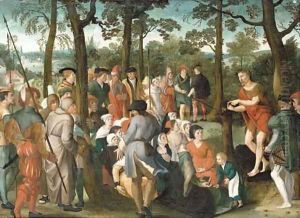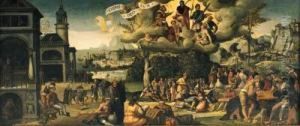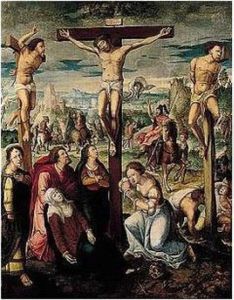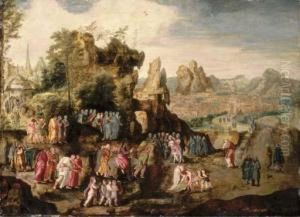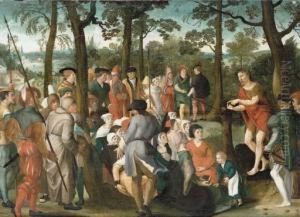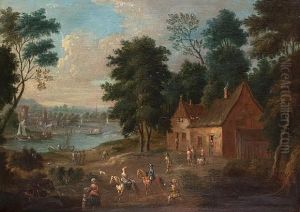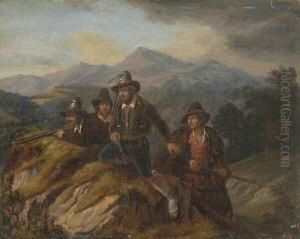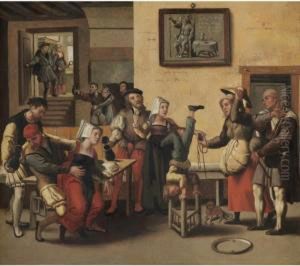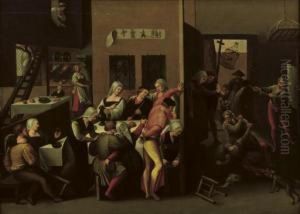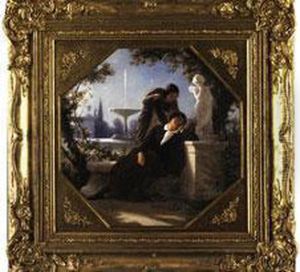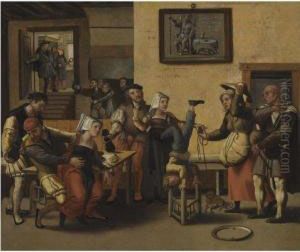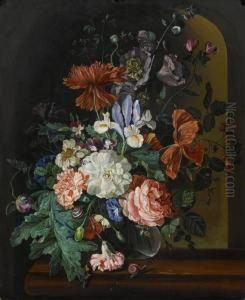The Brunswick Monogrammist Paintings
The Brunswick Monogrammist was a mysterious and enigmatic figure in the world of art history, known primarily for their work during the 16th century. The artist's true identity remains unknown, and they are named after a monogram that appears on several of their paintings, although even this signature is subject to interpretation and debate. The Brunswick Monogrammist was active around 1520 and continued to produce work until after 1560, predominantly in the area that is now modern-day Germany.
The works of the Brunswick Monogrammist are characterized by their detailed depiction of scenes of everyday life, tavern scenes, and religious narratives, often infused with a moralizing or cautionary element. These paintings are notable for their vivid portrayal of the figures within them, capturing a wide range of human emotion and activity. The artist demonstrated a keen observation of detail, and their work provides valuable insights into the customs, fashions, and social conditions of the time.
Despite the anonymity of the Brunswick Monogrammist, their artwork has attracted the attention of art historians and scholars due to its distinctive style and the quality of its execution. The paintings are often populated with numerous figures, each rendered with individual care, and set against the backdrop of intricate architectural or natural landscapes. The use of light and shadow, as well as the detailed representation of textiles and materials, showcases the artist's skill and attention to detail.
The lack of concrete biographical information has led to various theories and speculations regarding the artist's identity, training, and influences. Some scholars have suggested that the Brunswick Monogrammist may have been influenced by, or even a follower of, other well-known artists of the era, such as Pieter Bruegel the Elder. However, without definitive evidence, these theories remain speculative.
The enigmatic nature of the Brunswick Monogrammist adds an aura of mystery to their body of work, making it a subject of ongoing research and fascination. Despite the limited information available, the artist's contribution to the Northern Renaissance and their unique perspective on the society of their time continue to be appreciated by art enthusiasts and experts alike.
